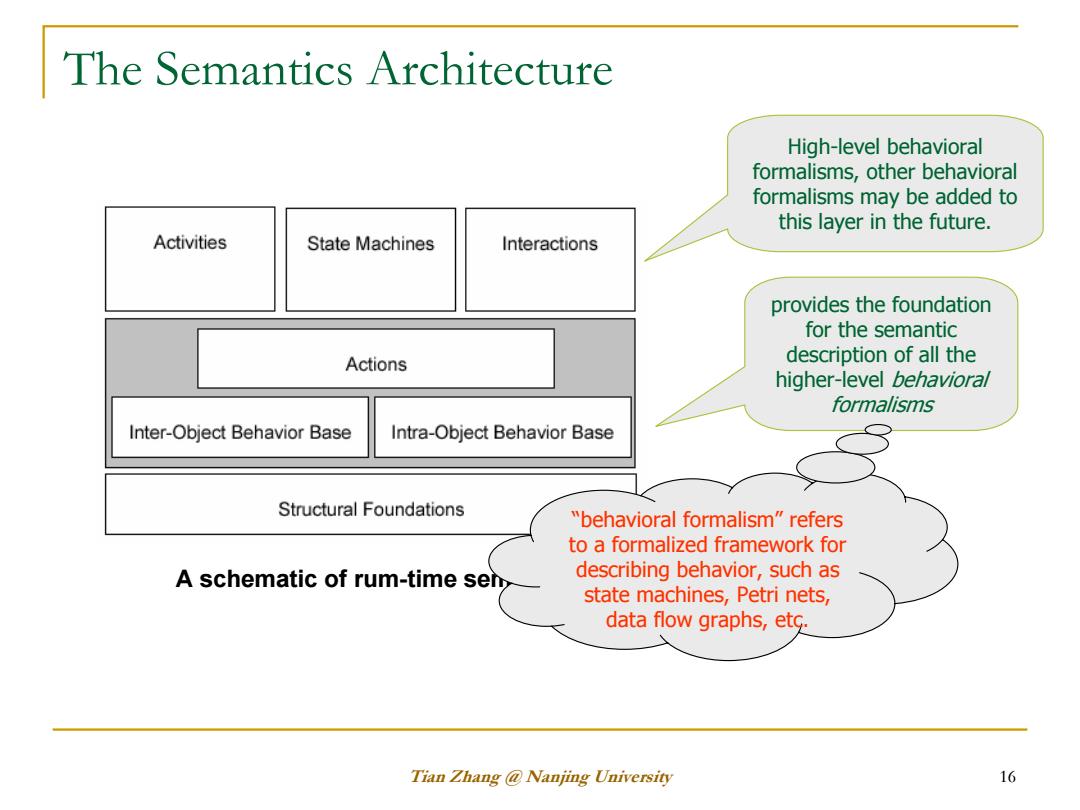
The Semantics Architecture High-level behavioral formalisms,other behavioral formalisms may be added to this layer in the future. Activities State Machines Interactions provides the foundation for the semantic Actions description of all the higher-level behavioral formalisms Inter-Object Behavior Base Intra-Object Behavior Base Structural Foundations "behavioral formalism"refers to a formalized framework for A schematic of rum-time sen describing behavior,such as state machines,Petri nets, data flow graphs,etg. Tian Zhang Nanjing University 16
Tian Zhang @ Nanjing University 16 The Semantics Architecture A schematic of rum-time semantics provides the foundation for the semantic description of all the higher-level behavioral formalisms High-level behavioral formalisms, other behavioral formalisms may be added to this layer in the future. “behavioral formalism” refers to a formalized framework for describing behavior, such as state machines, Petri nets, data flow graphs, etc
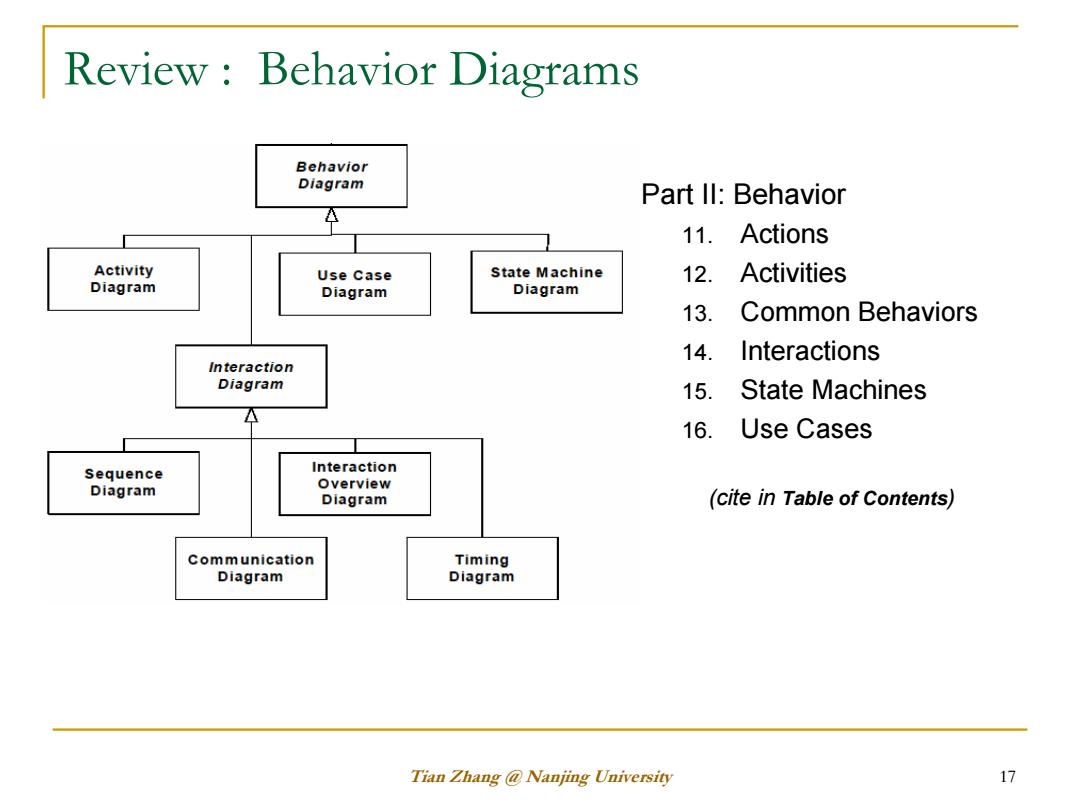
Review Behavior Diagrams Behavior Diagram Part ll:Behavior 11.Actions Activity Use Case State Machine 12.Activities Diagram Diagram Diagram 13.Common Behaviors 14.Interactions Interaction Diagram 15.State Machines 16.Use Cases Sequence Interaction Diagram Overview Diagram (cite in Table of Contents) Communication Timing Diagram Diagram Tian Zhang Nanjing University 17
Tian Zhang @ Nanjing University 17 Review : Behavior Diagrams Part II: Behavior 11. Actions 12. Activities 13. Common Behaviors 14. Interactions 15. State Machines 16. Use Cases (cite in Table of Contents)
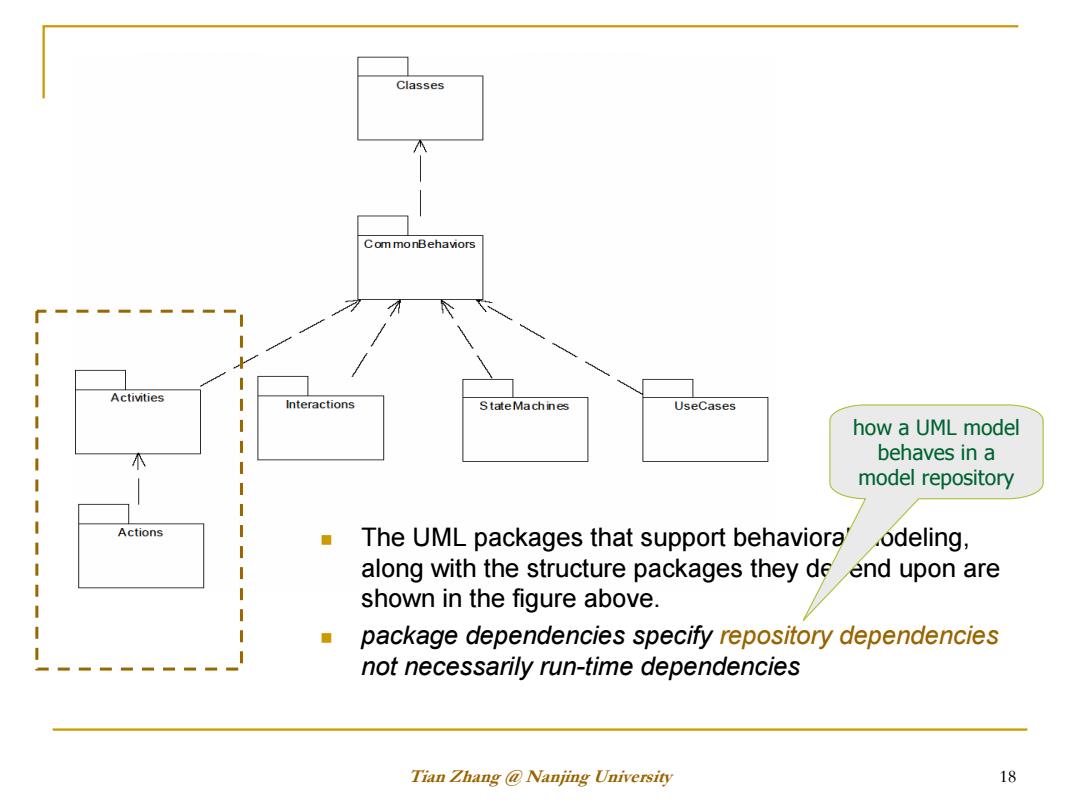
Classes Com monBehavors Activities Interactions StateMachines UseCases how a UML model behaves in a 1 model repository 1 Actions The UML packages that support behaviora'odeling, along with the structure packages they de end upon are shown in the figure above. package dependencies specify repository dependencies not necessarily run-time dependencies Tian Zhang Nanjing University 18
Tian Zhang @ Nanjing University 18 The UML packages that support behavioral modeling, along with the structure packages they depend upon are shown in the figure above. package dependencies specify repository dependencies not necessarily run-time dependencies how a UML model behaves in a model repository
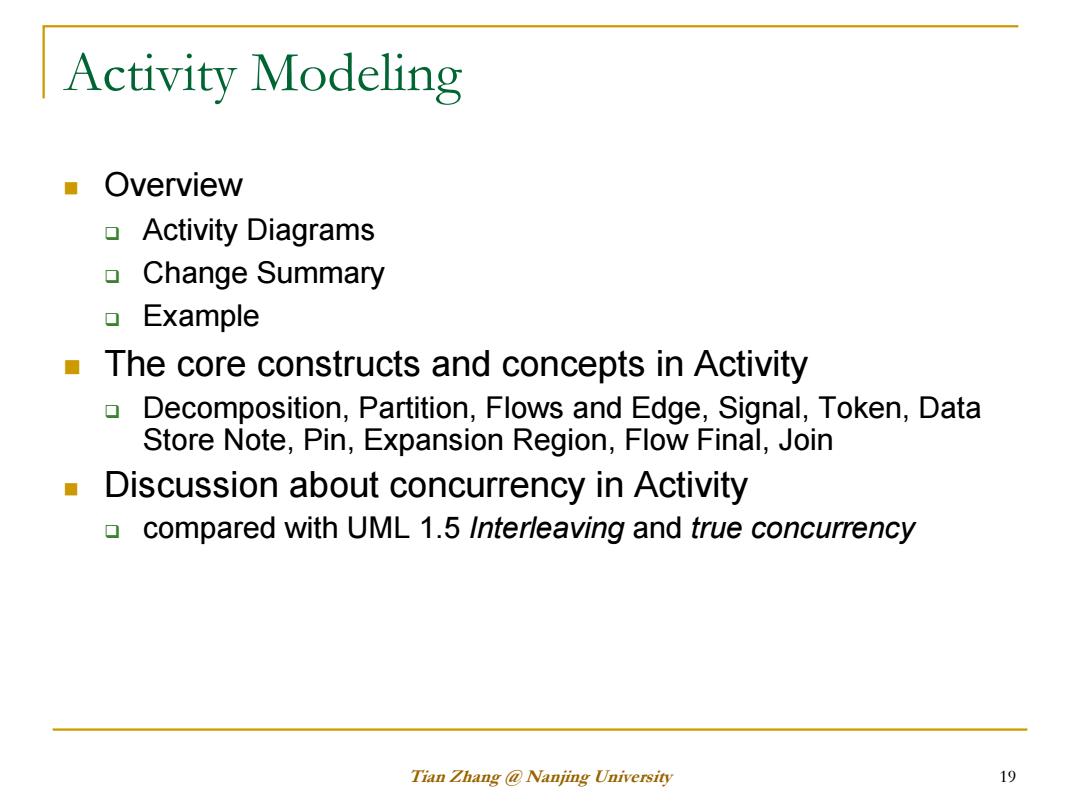
Activity Modeling Overview Activity Diagrams Change Summary Example The core constructs and concepts in Activity Decomposition,Partition,Flows and Edge,Signal,Token,Data Store Note,Pin,Expansion Region,Flow Final,Join ■ Discussion about concurrency in Activity 口 compared with UML 1.5 Interleaving and true concurrency Tian Zhang Nanjing University 19
Tian Zhang @ Nanjing University 19 Activity Modeling Overview Activity Diagrams Change Summary Example The core constructs and concepts in Activity Decomposition, Partition, Flows and Edge, Signal, Token, Data Store Note, Pin, Expansion Region, Flow Final, Join Discussion about concurrency in Activity compared with UML 1.5 Interleaving and true concurrency
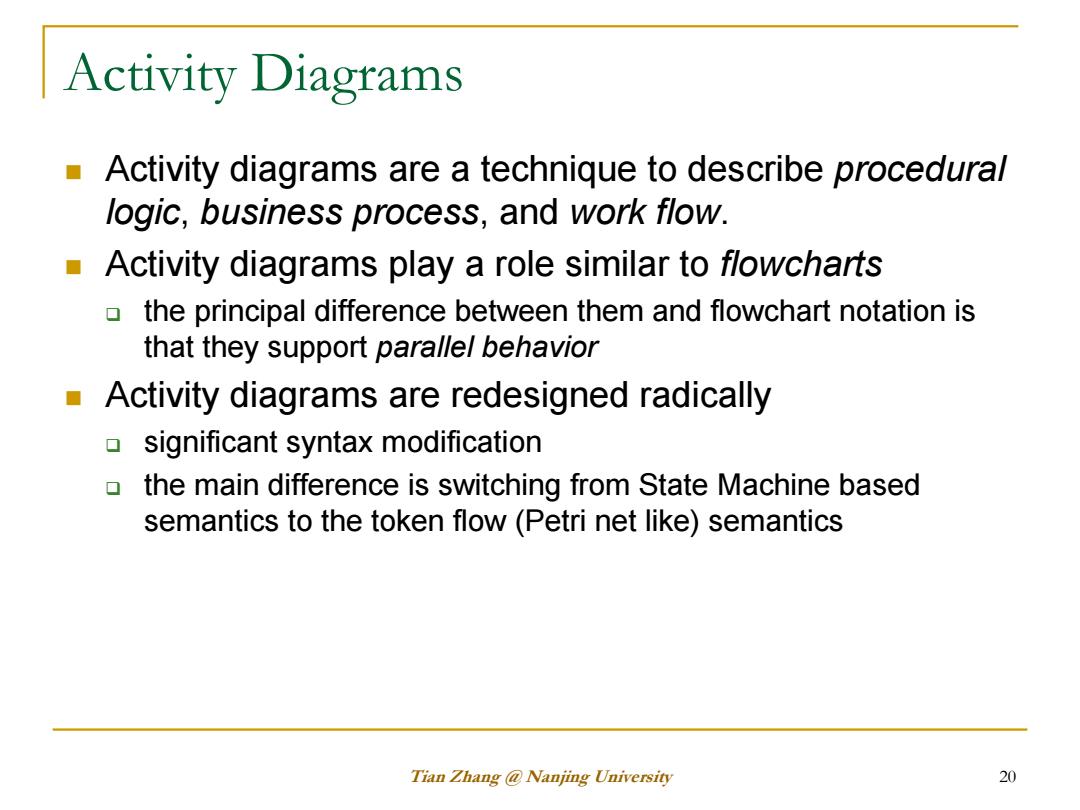
Activity Diagrams Activity diagrams are a technique to describe procedural logic,business process,and work flow. Activity diagrams play a role similar to flowcharts the principal difference between them and flowchart notation is that they support parallel behavior Activity diagrams are redesigned radically significant syntax modification the main difference is switching from State Machine based semantics to the token flow(Petri net like)semantics Tian Zhang Nanjing University 20
Tian Zhang @ Nanjing University 20 Activity Diagrams Activity diagrams are a technique to describe procedural logic, business process, and work flow. Activity diagrams play a role similar to flowcharts the principal difference between them and flowchart notation is that they support parallel behavior Activity diagrams are redesigned radically significant syntax modification the main difference is switching from State Machine based semantics to the token flow (Petri net like) semantics